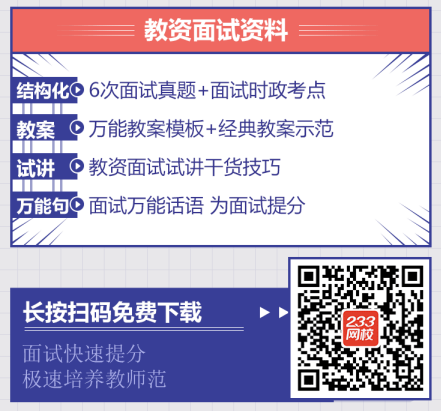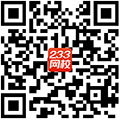1.題目:讀寫教學試講
2.內容:
Big Cities and the Countryside
Do you live in a big city? Do you live in the countryside? Some people like big cities; others like the countryside. Big cities are busier than the countryside. Big cities have more factories than the countryside. Big cities are warmer in winter than the countryside and hotter in summer than the countryside. There are more trees in the countryside. There are more people in big cities. The countryside is greener and quieter than big cities.
Big cities are ______ than the countryside.
The countryside is ______ than big cities. 3.基本要求:
(1)采用英語授課,試講時間約 10 分鐘; (2)試講時需示范朗讀教學內容,進行朗讀技巧的指導; (3)創設情境通過提問引導學生梳理文本基本信息,并進行閱 讀方法的指導; (4)抓住關鍵詞句設計板書輔助學生進行語言表達的操練。
Teaching Procedures:
I. Lead-in
Show students some pictures of big cities and the countryside. Ask students to talk about their feelings after looking at these pictures.
II. Pre-reading
Create a situation: Our friend Tom has visited many places including some big cities and also the countryside. He wrote a passage about comparing big cities and the countryside. Then ask students to predict what he would write in the passage.
III. While-reading
Skimming: Students read Tom’s passage quickly for the first time and figure out what the differences are between cities and the countryside.
Scanning: Students read the passage again and answer the following questions:
(1) What are big cities like?
(2) How about the countryside?
(3) Finish the chart on the blackboard.
Intensive reading: Lead students to compare big cities and the countryside with following sentences according to the chart above and then write them down.
(1) Big cities are ______ than the countryside.
(2) The countryside is ______ than big cities.
IV. Post-reading
Students work in groups of four to make a survey. There is a little journalist in each group, and he/she will interview the others about whether they like big cities or the countryside more and why. Finally, all the journalists are invited to give a report to the whole class.
V. Summary
Students summarize the differences between big cities and the countryside. The teacher stresses the importance of enjoying life.
VI. Homework
Surf the Internet after class for more information about big cities and the countryside, and then make a post.
板書設計:略
閱讀教學試講
1. 題目:閱讀教學試講
2. 內容:
We can learn a lot about a place, its history and culture from a postcard and the stamp on it. In 2005, some postcard collectors from different countries started a project. First, they created a website. Then people from all over the world could join and become members. The members send each other postcards. As a result, they make new friends and learn about the cultures and history of different countries.
3. 基本要求:
(1)朗讀所給材料;
(2)配合教學內容適當板書; (3)針對所給材料,設計相應的讀前教學活動; (4)試講時間 10 分鐘;
(5)用英文試講。
【試題解析】
Teaching Procedures:
I. Lead-in
Show students some postcards and stamps. Give some hints and ask students about what they know about the pictures. Questions: Do you know what they are?
What do you know about them?
II. Pre-reading
1. Show students some key words on the blackboard, like postcard, stamp, website, members, friends, cultures and history.
2. Based on the pictures in the leading in and the key words on the blackboard, let students guess what the main idea of this passage is.
III. While-reading
Activity 1 Skimming
Ask students to read the passage quickly and confirm their predictions about the passage. The teacher asks students a few questions like “What do you think will be mentioned in this passage?” “What can a postcard do?” to elicit the topic “postcard” of this passage. Then ask students to conclude the main gist of the passage.
Activity 2 Scanning
Present students with a chart containing information from the passage and ask students to scan the passage to fill in the chart. Then the teacher asks students three questions:
Q1: Who started the project?
Q2: How do the members make friends with each other? Q3: What can people know from making friends with each other?
Activity 3 Intensive reading
Ask students to read the passage carefully for the last time, and they need to finish the stage of the project:
2. Students underline the important phrases on the book, like learn about, make friends, all over the world and so on. Then discuss with partners if they have some difficulties in understanding these phrases.
IV. Post-reading
1. Try to retell the short paragraph this time with the guidance of the key words on the blackboard.
2. Group discussion: How can you make friends? How can you learn about the culture of other countries?
V. Summary
Students summarize the main language points about postcards and the teacher makes supplements. Develop students’ reading skills and arose their interest in English culture.
VI. Homework
Surf the Internet after class for more kinds of stamps and stories behind them and share with the class in the next lesson.
板書設計:略
口語教學試講
1.題目:口語教學試講
2.內容:
A: Everyone,this is Sarah Chen. She was in England lastsummer. Today,she is here to talk to us about learningEnglish in England.
B: Good morning, everybody. l went to summer senooi irEngland for one month last year. When l left China, I spokeEnglish poorly. l stayed with an English family while l was inEngland. They were very nicc and thoy hclpcd me a lot.My English was much better when I returned.
C: Sarah, how did you improve your English in England?
B: l took notes while l was at school during the day. l usedEnglish all day because l spoke it at school l practicedEnglish at night as well.
3.基本要求
(1)朗讀所給對話;
(2)配合教學內容適當板書;
(3)針對所給材料的內容,設計講述個人經歷的口語教學活動;
(4)用英文試講;
(5)試講時間:10分鐘。
Teaching Procedures:l.Lead-in
The teacher shares his/her own experience of learningEnglish with classmates.And ask students“How do youusually learn English?”
ll.Presentation
1. Listen to the tape and get the main idea of thedialogue.
1 : How many people are there in the dialogue?Q2: What are they talking about?
2.Listen to the tape again and answer some questions.1 : Who is going to share his/her experience?
2:How long did Sarah stay in England?
3:How did Sarah learn English in England?
Q4: What did Sarah do to improve her spoken English?lI.Practice
Activity 1: Pair work
students read the dialogue in pairs. Then exchangeroles.
Activity 2: Group work
Divide students into four groups and discuss what elsemethods can be used to improve their English. Ten minutes later, each group representative makes a reportof their discussion result.
lV.Consolidation
Students prepare a speech to introduce their ownpersonal experiences. They can choose a certain periodof their life and try to share their experience. Afterpreparations,the teacher invites several students tocome to the front to give a speech.
v. Summary
Students summarize what they have learnt in this lessonand the teacher gives supplements if necessary, andreminds them the importance of choosing correct waysto learn English.
Vl.Homework
Practice their speech after class for a speech context.
板書設計:略
更多2020年初中英語教師資格證面試真題:
1. Boston.Moscow.Toronto,這三個單詞的重音
2.試講是寫作,關于bourke的愛好精神還有女人是不是應該出去工作的寫作寫作課陳述觀點
3.初中when was it invented
4.《寫作Application學校應聘》
5.《詞匯Breakfast lunch supper》
6.《聽力Scott和Lucy打電話,Scott問Lucy其他家人在干什么》
7.《will people have robots》
8.《口語喜歡大象和狗》
9.《聽力題關于澳大利亞CCTV和Around the world的欄目》
10.《YangLei 的經歷》閱讀教學
11.《Bourtke white》
【微信掃描下方二維碼,獲取更多初中語文教師資格證面試真題及答案】

233網校估分題庫:
點擊進入>>233網校初中英語教師資格證面試真題及答案估分入口
2020年初中英語教師資格證面試成績查詢時間為2021年3月3日,成績查詢入口為中小學教師資格考試網。
【手機短信免費預約教師資格查分提醒】
初中英語教師資格證面試歷年真題:【戳這里>>領取教資歷年真題PDF下載版】
年份 | 真題 |
2019下半年 | |
2019上半年 | |
2018下半年 | |
2018上半年 | |
2017下半年 | |
2017上半年 | |




